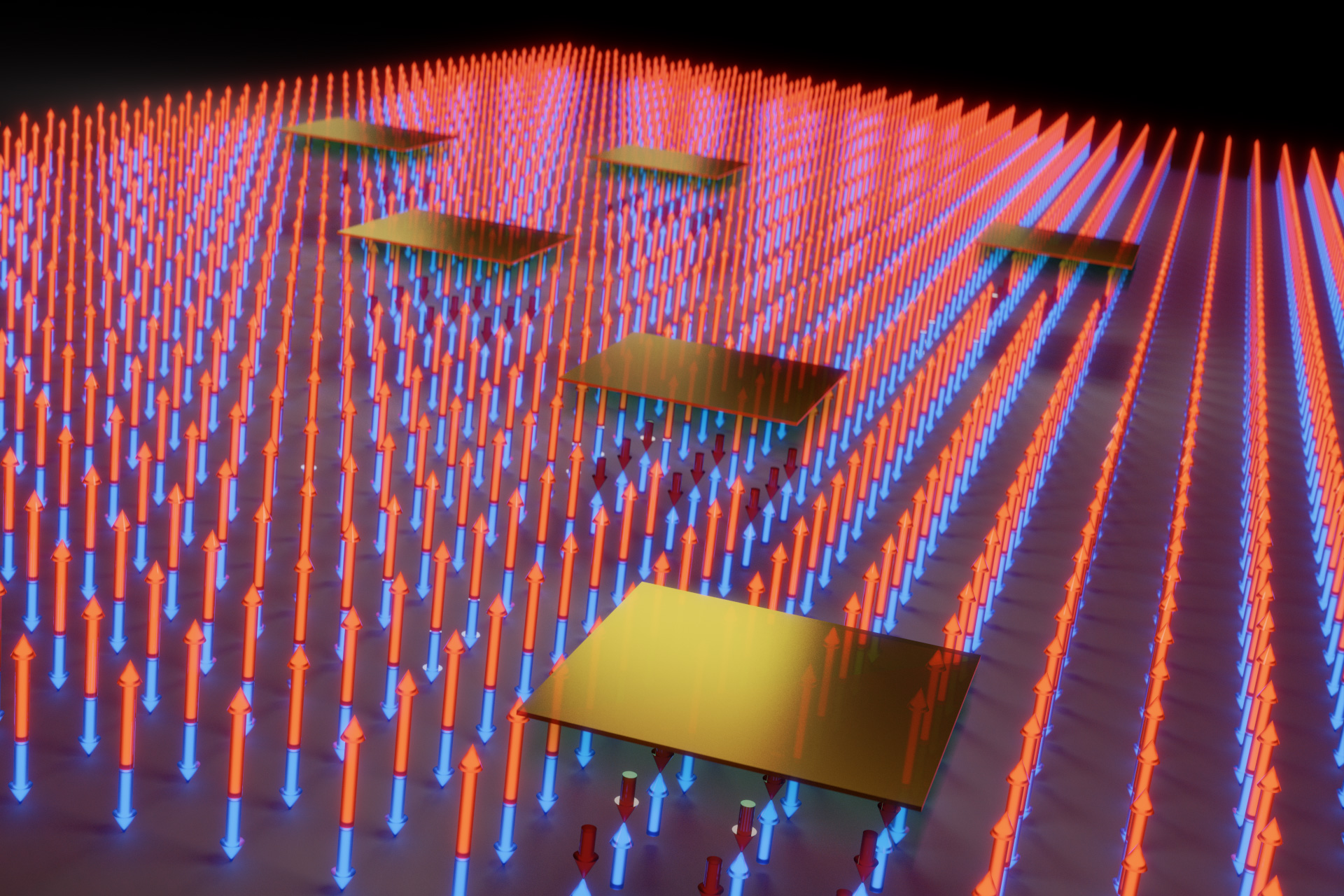Researchers Discover New Way to Control Magnets | MIT News
[ad_1]
Most of the magnets we come across on a daily basis are made of “ferromagnetic” materials. The north-south magnetic axes of most atoms in these materials are aligned in the same direction, so their collective strength is strong enough to produce significant attraction. These materials form the basis of most data storage devices in today’s high-tech world.
Magnets made from ferrimagnetic materials, with an “i”, are less common. In these, some of the atoms are aligned in one direction, but others are aligned precisely in the opposite direction. As a result, the overall magnetic field they produce depends on the balance between the two types – if there are more atoms pointed one way than the other, that difference produces a sharp magnetic field in that direction. .
In principle, due to their magnetic properties strongly influenced by external forces, ferrimagnetic materials should be able to produce data or logic storage circuits that are much faster and can pack more data in a given space than ferro-magnets. conventional today. But until now, there has been no easy, fast and reliable way to change the orientation of these magnets, in order to go from a 0 to a 1 in a data storage device.
Researchers at MIT and elsewhere have developed such a method, a way to quickly change the magnetic polarity of a ferri-magnet 180 degrees, using just a small applied voltage. The discovery could usher in a new era of ferrimagnetic logic and data storage devices, the researchers say.
Results appear in the journal Nature Nanotechnology, in an article by postdoctoral fellow Mantao Huang, professor of materials science and technology at MIT Geoffrey Beach, and professor of nuclear science and technology Bilge Yildiz, with 15 others at MIT and in Minnesota, Germany, Spain and Korea.
The new system uses a film of material called gadolinium cobalt, which is part of a class of materials known as rare earth transition metal ferrimagnetics. In it, the two elements form nested atom networks, and gadolinium atoms preferentially have their magnetic axes aligned in one direction, while cobalt atoms point in the opposite direction. The balance between the two in the composition of the alloy determines the overall magnetization of the material.
But researchers have found that by using voltage to split water molecules along the film’s surface into oxygen and hydrogen, oxygen can be vented while hydrogen atoms – or more precisely their nuclei , which are single protons – can penetrate deep into material. , which alters the balance of the magnetic orientations. The change is enough to change the orientation of the net magnetic field by 180 degrees – exactly the kind of complete reversal that is needed for devices like magnetic memories.
“We have found that by charging hydrogen into this structure, we can dramatically reduce the magnetic moment of gadolinium,†says Huang. Magnetic moment is a measure of the strength of the field produced by the alignment of the axis of rotation of the atom.
Because the change is accomplished simply by a change in voltage, rather than by an applied electric current that would cause heating and therefore waste energy through heat dissipation, this process is very energy efficient, says Beach, who is the co-director of materials research at MIT. Laboratory.
The process of pumping hydrogen nuclei into the material turns out to be remarkably benign, he says. “You would think that if you take a material and pump other atoms or ions into that material, you will expand it and break it. But it turns out that for these films, and because the proton is such a small entity, it can infiltrate most of that material without causing the kind of structural fatigue that leads to failure.
This stability has been proven by grueling tests. The material was subjected to 10,000 polarity reversals without any sign of degradation, Huang said.
The material has additional properties that can find useful applications, Beach says. Magnetic alignment between individual atoms in the material works much like springs, he explains. If one atom begins to misalign with the others, this spring-like force pulls it out. And when objects are connected by springs, they tend to generate waves that can travel along the material. “For this magnetic material, we call them spin waves. You get oscillations of magnetization in the material, and they can have very high frequencies.
In fact, they can oscillate towards the high end of the terahertz range, he says, “which makes them particularly capable of generating or detecting very high frequency electromagnetic radiation. Few materials can do it.
Relatively simple applications of this phenomenon, in the form of sensors, might be possible within a few years, Beach says, but more complex applications such as data and logic circuits will take longer, in part because the whole field of ferrimagnetic technology is relatively new.
The basic methodology, aside from these specific types of magnetic applications, could have other uses as well, he says. “It’s a way of controlling the properties within the mass of the material using an electric field,†he explains. “That in itself is quite remarkable. “Other work has been done on the control of surface properties using applied voltages, but the fact that this hydrogen pumping approach allows such deep weathering allows” the control of a wide range of properties. He said.
The team included researchers from the University of Minnesota, the ALBA synchrotron light source in Barcelona, ​​Spain; Chemnitz University of Technology; Leibnitz IFW in Germany; Korea Institute of Science and Technology; and Yonsei University, Seoul. The work was supported by the National Science Foundation; the Defense Advanced Research Projects Agency; the Spintronic Materials Center for Advanced Information Technologies; Korea Institute of Science and Technology; the German Science Foundation; the Ministry of Economy and Competitiveness of Spain; and the Kavanaugh Fellowship Program from the Department of Materials Science and Engineering at MIT.
[ad_2]

